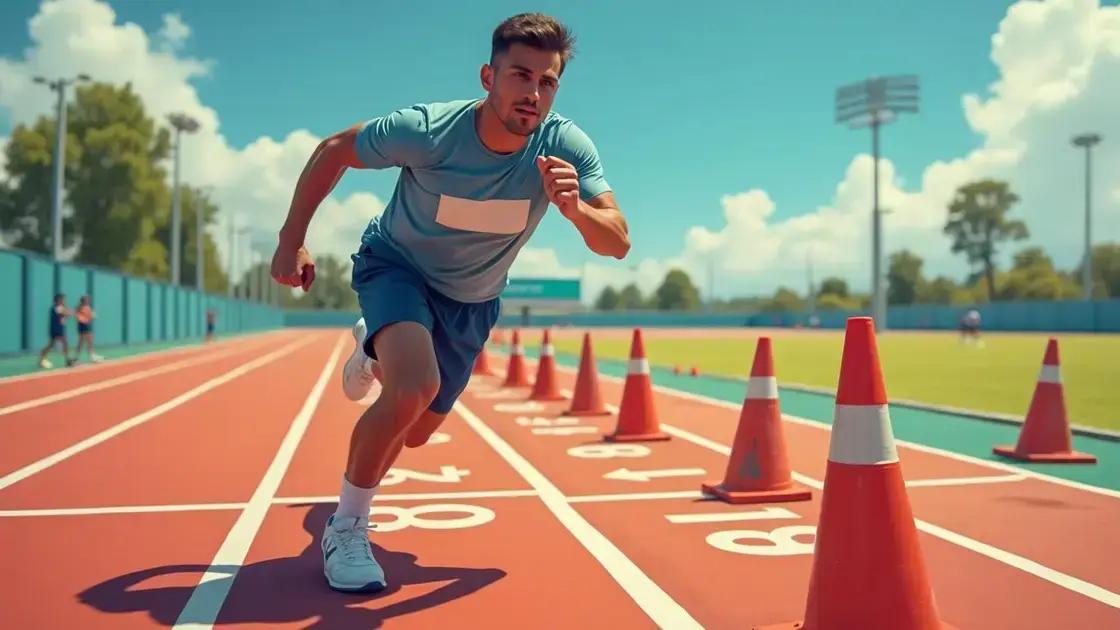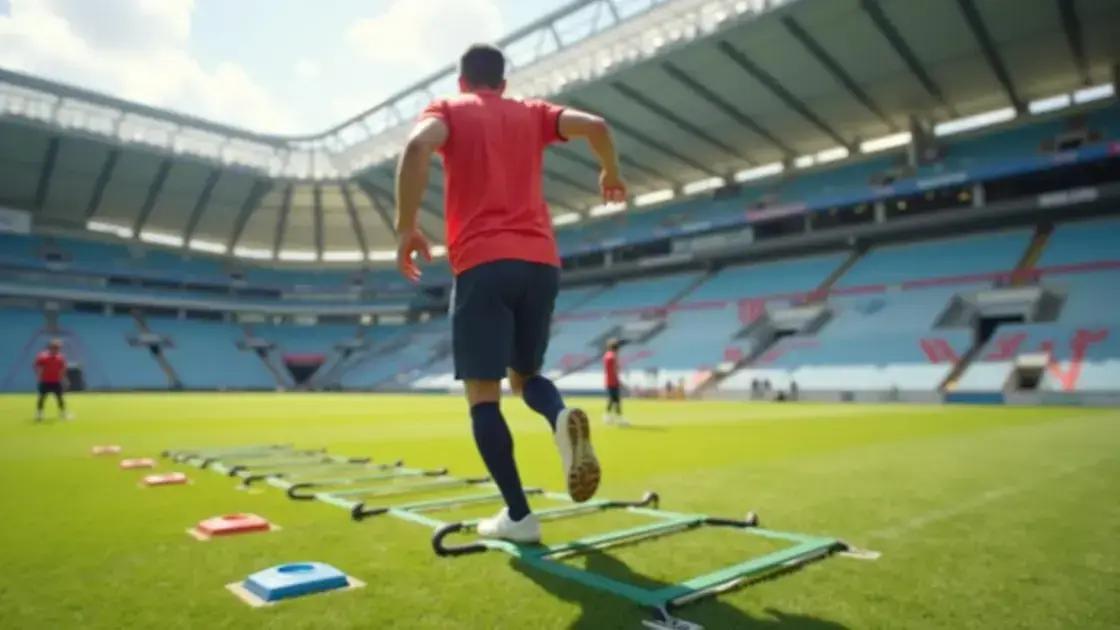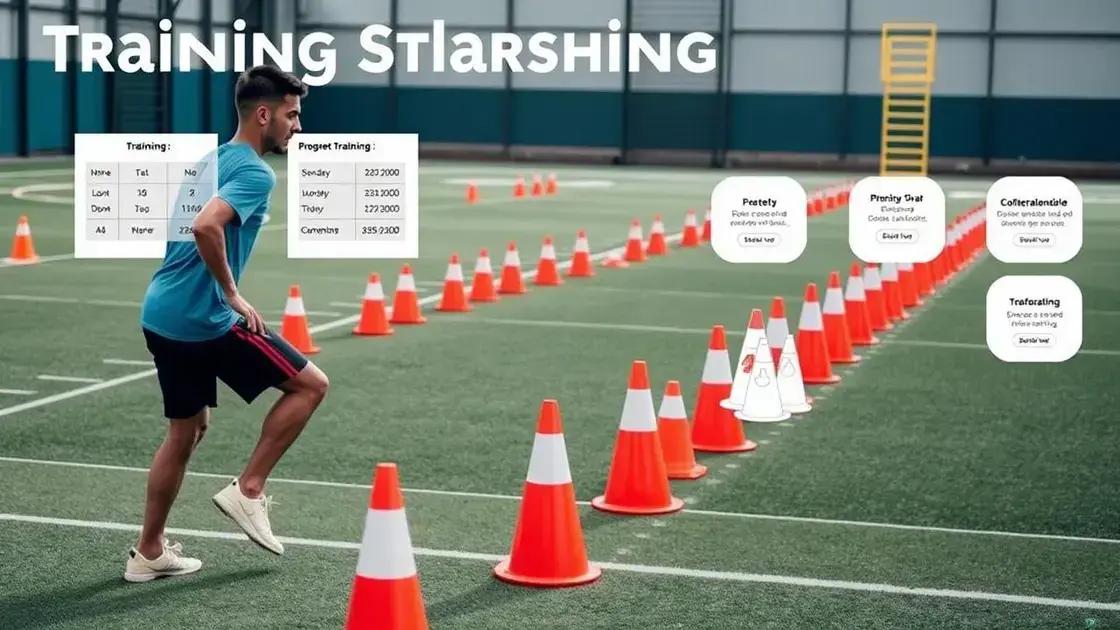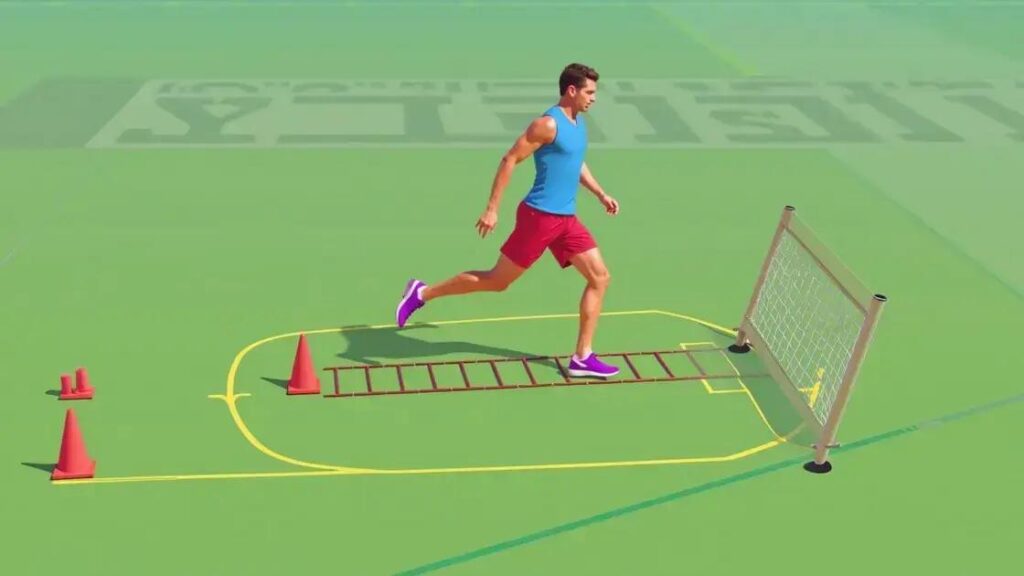To improve reaction speed effectively, incorporate agility drills like ladder and cone drills into your routine, measure your progress with various techniques, and ensure proper warm-up and technique focus. These strategies will enhance coordination, foot speed, and overall athletic performance.
Improving reaction speed is crucial for athletes seeking a competitive edge. Reaction speed can significantly impact performance in various sports. By incorporating agility drills into your training regimen, you can enhance not just speed but also coordination and overall athleticism. This article will explore key agility drills that effectively improve reaction speed, techniques to measure your progress, and how to integrate these exercises into your regular training routine.
Understanding Reaction Speed

Understanding reaction speed is essential for athletes who want to enhance their performance. Reaction speed refers to the time it takes for an individual to respond to a stimulus. In sports, this can mean the difference between winning and losing. Faster reaction times allow athletes to respond to opponents, make plays, and avoid injuries more effectively.
Components of Reaction Speed
Reaction speed is influenced by various factors, including neuromuscular coordination, visual processing, and decision-making skills. That’s why athletes should focus not only on physical training but also on mental exercises to improve their overall performance.
Neuromuscular Coordination
Good neuromuscular coordination helps muscles and nerves work together efficiently. Exercises that target this component can enhance overall body control, resulting in quicker reactions. Training that improves coordination often includes agility drills, plyometrics, and balance exercises.
Visual Processing
Athletes need to process visual information quickly to react effectively. This skill can be improved through specific drills that require anticipating movement and making quick judgments. Engaging in activities like ball games or reaction-training exercises can help enhance visual acuity.
Decision-Making Skills
In addition to being quick, athletes must also make accurate decisions under pressure. Drills that simulate game situations can help develop this skill by forcing athletes to think and react quickly. Training in diverse environments will train the brain to respond faster and smarter.
By understanding these components, athletes can focus on targeted practice that effectively improves their reaction speed. Incorporating agility drills into your training can positively impact these underlying factors.
Key Agility Drills to Boost Performance

Incorporating agility drills into your training can significantly boost your performance. Here are some key agility drills to consider:
Ladder Drills
Ladder drills are fantastic for improving foot speed and coordination. You can set up an agility ladder on the ground and perform various exercises, such as:
- **Two Feet In Each Square**: Step quickly into each square.
- **In-and-Out**: Step in then out of each square with both feet.
- **Lateral Shuffle**: Move sideways while stepping into the ladder squares.
Cones Drills
Using cones helps simulate game situations. You can use them in various formations:
- **T-Drill**: Set up cones in a T shape and sprint to each point.
- **Figure 8**: Weave in and out of cones set in a circular pattern.
- **Box Drill**: Sprint, shuffle, and backpedal around a square formed by cones.
Jumping Drills
Jumping drills also enhance agility and explosiveness. Some effective jumping drills include:
- **Box Jumps**: Jump onto a sturdy box or platform, focusing on landing softly.
- **Broad Jumps**: Jump as far forward as possible, landing on your feet.
- **Single-Leg Hops**: Hop forward on one leg to improve balance and power.
Reaction Drills
These drills are designed to improve your quick response time. You can add a partner or use a wall:
- **Partner Reaction Drill**: Have a partner call out directions as you react quickly.
- **Wall Toss**: Throw a ball against the wall and catch it while moving.
- **Color Coded Agility**: Set up colored cones and react to commands based on color.
Incorporating these agility drills into your training routine will help enhance your reaction speed and overall performance.
Techniques to Measure Reaction Speed

Measuring reaction speed is crucial for athletes looking to improve their game. Here are some effective techniques to measure reaction speed:
Stopwatch Method
The simplest way to measure reaction speed is using a stopwatch. Have a partner drop a ball and start the timer when they release it. You then catch the ball as quickly as possible. Record your time to see how fast you reacted.
Reaction Light Systems
High-tech options like reaction light systems are designed for athletes. These systems use lights that illuminate unpredictably, and the player must respond by hitting the light quickly. This accurately measures how fast you can react to visual stimuli.
App-Based Reaction Tests
Many mobile apps offer reaction tests. These apps often use sound or visual cues and track your response time. Some popular apps even provide scores and trends, allowing athletes to see their progress.
Computer-Based Tests
More advanced setups use computer software with specific drills designed to measure reaction time. Drills might involve clicking a mouse or pressing keys in response to changing visuals on the screen. These tests provide detailed feedback on your reaction speed.
Field Drills
Finally, using agility drills on the field can also serve as a practical measure. Set up a drill where you need to react to a cue, like a whistle or a signal from a coach, and time how long it takes you to complete the drill. This not only tracks the reaction speed but also factors in movement efficiency.
By using these techniques, athletes can effectively track their reaction speed and improve their training strategies.
Integrating Drills into Your Training Routine

Integrating agility drills into your training routine is essential for improving reaction speed. Here are some practical tips on how to effectively incorporate these drills:
Set Clear Goals
Before adding drills, it’s important to set specific goals for what you wish to achieve. Whether you want to enhance speed, agility, or reaction time, clear objectives will guide your training.
Develop a Weekly Schedule
Creating a weekly training schedule can help you remain consistent. Make sure to designate specific days for agility drills, alternating between different types to prevent fatigue. For example, you can focus on ladder drills one day and cone drills another.
Warm-Up Properly
Before engaging in agility drills, always start with a proper warm-up. This helps reduce the risk of injury and prepares your muscles for intense activity. Simple dynamic stretches and light jogging can greatly enhance your performance during drills.
Focus on Technique
While speed is important, technique should not be overlooked. Prioritize correct form during drills to optimize efficiency and effectiveness. Take time to practice slow movements first, and then gradually increase speed as you become more comfortable.
Track Your Progress
Monitoring your performance can help you see improvements and adjust your training. Use stopwatches, apps, or notes to keep track of how fast you complete drills. This can motivate you and help you set new goals.
Be Flexible and Adjust
Finally, be prepared to adjust your routine as needed. If certain drills aren’t yielding results or if you feel fatigued, tweak your schedule. A flexible approach promotes better adherence to your training plan over time.
By following these steps, you can successfully integrate agility drills into your training routine and work towards improving your reaction speed.
Maximizing Your Reaction Speed with Agility Drills
Improving reaction speed through agility drills is crucial for athletes in various sports. By understanding the components of reaction speed, incorporating key agility drills, and measuring performance effectively, you can enhance your overall athletic ability.
Integrating these drills into your training routine allows you to set specific goals, maintain consistency, and track your progress. Remember, a proper warm-up and a focus on technique can significantly impact your performance. Flexibility in your training plan ensures that you adapt and overcome challenges on the road to improvement.
By following these strategies, you lay a solid foundation for becoming a quicker, more responsive athlete. Embrace the journey of enhancing your skills and enjoy the benefits of increased agility and reaction speed.
FAQ – Frequently Asked Questions about Improving Reaction Speed with Agility Drills
How can agility drills improve my reaction speed?
Agility drills enhance your coordination, foot speed, and overall athleticism, leading to quicker responses in sports situations.
What are some key agility drills I can practice?
Some effective agility drills include ladder drills, cone drills, jumping drills, and reaction drills that simulate game situations.
How can I measure my reaction speed?
You can measure your reaction speed using methods like stopwatches, reaction light systems, mobile apps, and computer-based tests.
How often should I incorporate agility drills into my training routine?
Aim to include agility drills 2-3 times a week in your training routine to ensure consistent improvement without overtraining.
Is it necessary to warm up before agility drills?
Yes, warming up is essential to prevent injuries and prepare your muscles for the intense activity involved in agility training.
What should I focus on while performing agility drills?
Focus on proper technique, speed, and changing directions quickly while maintaining control and balance during the drills.












